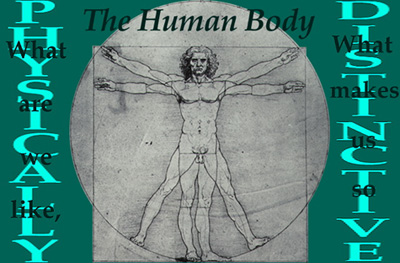 |
The Physical Characteristics of Humans
- Page 1 -
 |
Culture is a distinctive characteristic of our species. It is also, in many ways, a reflection of our physical characteristics. Culture developed step by step with our physical evolution.
One of the themes of the section of this module called "Hominid Species Timeline" is the presence of cultural artifacts and evidences of cultural practices in the archeological record of human life from the very earliest times. Evidence of culture and clues about its origins can also be found in our very anatomy, in the unique "design" of our bodies and in our patterns of maturation.
If it is true that culture, at least in its more complex and elaborated forms, is a distinctly human characteristic, the question remains: Why? Why is cultural behavior so uniquely important to humans? How and why did it develop? What is its role in our lives? Is culture merely a reflection of our intelligence? Did it arise automatically because humans are so "brainy"?
Perhaps. But the questions themselves bear careful scrutiny. To answer these questions, we need to examine who and what we are, beginning with "What are we like, physically?" In this way, we may assemble some clues about the nature of culture and its role in our existence.
The human body is a remarkable "design" which can tell us a great deal about our way of life. Some of our most important characteristics as a species can also be observed in features of our body, our special advantages, physical limitations, and the distinctive way we mature as individuals. These characteristics stand out clearly if we think about the differences which separate us from our nearest relatives, the apes. While there are minor differences between apes and humans too numerous to mention, this discussion focuses on ten significant differences that influence how we live our lives as human beings.
For more information, click on each of the items below:
The human skin as a heat diffusion device
The hand with its uniquely opposable thumb
The throat and the position of the larynx